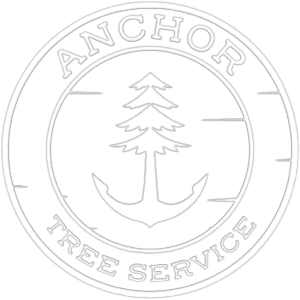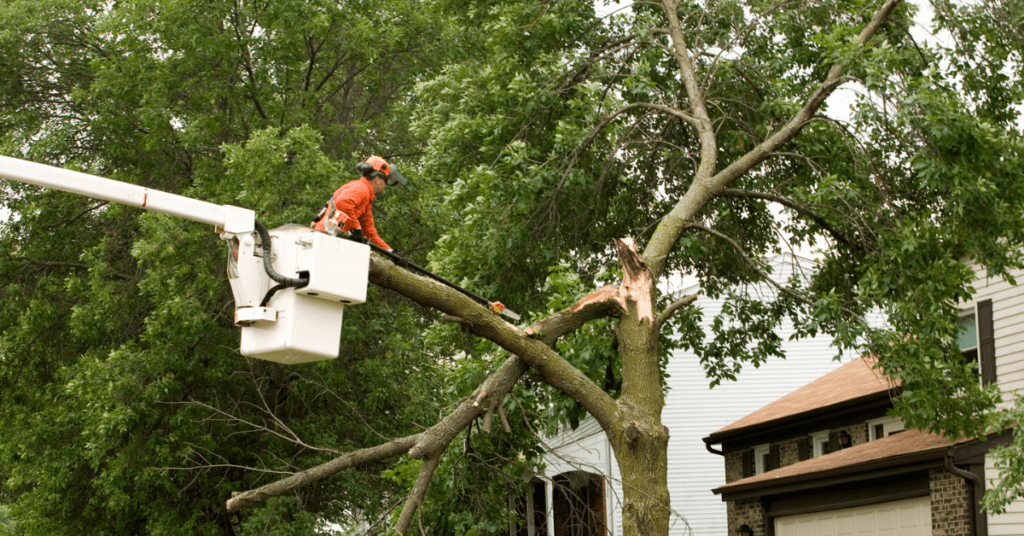Whether you’re a homeowner, a property manager, or a municipality leader, emergency tree care is a crucial topic you can’t afford to overlook. Every year, trees pose immediate risks causing property damage, power outages, and in the worst-case scenarios – loss of life. Understanding what to look for and the steps to take when a tree poses an immediate risk can help prevent potential damage and injuries.
Spotting Potential Risks
As part of routine property maintenance and safety practices, it’s essential to be aware of the signs that a tree could be a potential immediate risk.
Leaning and Fissures
If a tree is tilting or has visible cracks, it could be unstable and prone to falling, especially under strong winds or during storms.
Dead Limbs and Decay
Dead or broken branches are safety hazards as they can fall unexpectedly. Fungal growths are a red flag for decay which weakens the tree’s structure.
Empty Trunk and Root Issues
A hollow or rotting trunk signifies compromised structural strength. Damaged roots can also destabilize a tree.
Past Damage or Disease
If a tree has been previously affected by storms, disease, or pests, it may be weakened and more susceptible to future damage.
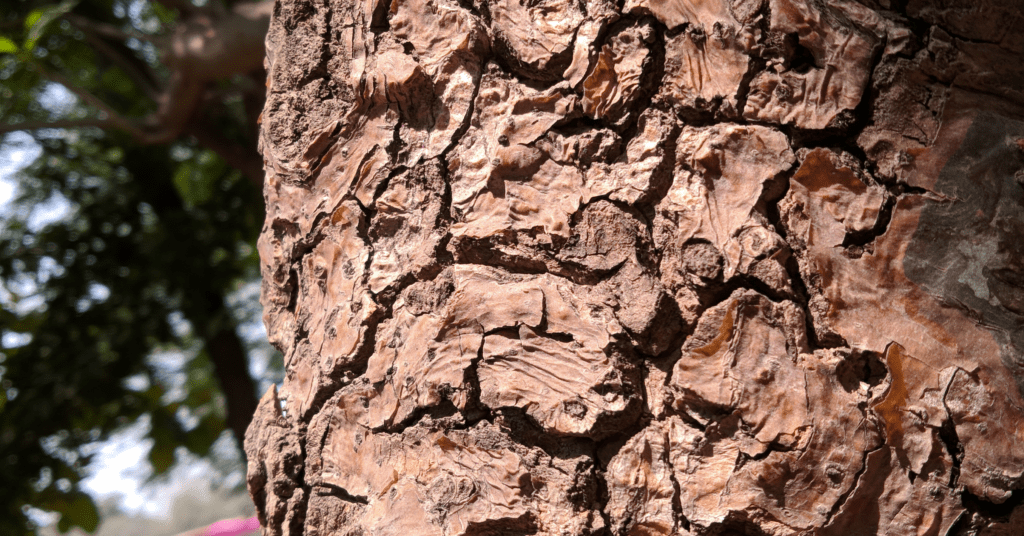
While assessing a tree’s risks, certain signs indicate a higher probability of it posing an immediate danger. Understanding these signs is crucial for timely intervention. 6 Signs It Might Be Time To Remove Your Tree can guide you in spotting these warning signs early. In light of these warning signs, it’s crucial to seek guidance from certified arborists like Anchor Tree Service before these threats become emergencies. Given the complexity of assessing and managing tree risks, the expertise of a certified arborist is indispensable. Why Should You Hire An ISA Certified Arborist? explains the benefits of entrusting your tree care to certified professionals.
Immediate Steps to Take
When a tree is identified as posing an immediate risk, here are the steps you should take:
1. Assess the Situation Safely
Evaluate the situation from a safe distance. Do not attempt to get close to or touch the tree, especially if power lines are involved.
2. Contact Professionals
Immediately contact a professional arborist or tree care service that specializes in emergency tree removal or stabilization. For situations involving power lines, call BC Hydro first.
3. Secure the Area
Keep people and pets away from the area around the risky tree. If possible, use caution tape or barriers to mark off the area.
4. Document the Damage
Take photos or videos of the tree and any damage it may have caused from a safe distance. This documentation can be helpful for insurance claims or for the professionals assessing the situation.
The Arborist’s Role In Assessing Tree Risk
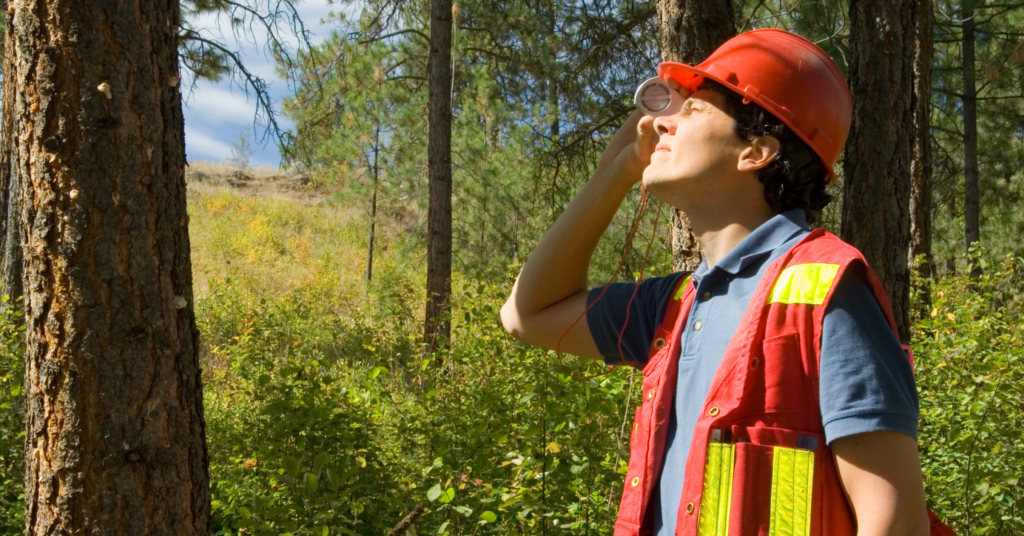
Prevention is key to reducing the risks posed by trees. Regular inspections by certified arborists like Anchor Tree Service can identify potential problems before they become emergencies. Arborists use several criteria to determine if a tree is dangerous and needs immediate attention. They look for signs of decay or damage and study the tree’s inclination or tilt. Preventive measures play a significant role in mitigating the risks posed by trees during severe weather conditions. Preventing Storm Damage to Your Trees offers strategies to strengthen your trees against the forceful impact of storms.
Arborists scrutinize the root health and the state of the tree canopy. They consider the tree’s proximity to structures, roadways, power lines, and other potential targets. The proximity of trees to structures is a critical factor considered by arborists during risk assessment. Should I Remove a Tree Close to the House? explores how close is too close when it comes to trees near your living spaces. Environmental factors, species and growth characteristics, and past incidents also influence the assessment process. Should they deem a tree to pose an immediate hazard, arborists will provide appropriate recommendations for addressing the threat.
In Victoria, where the natural landscape plays a significant role in the community’s identity, preserving the health and safety of our trees is a shared responsibility. Anchor Tree Service offers regular inspection and maintenance programs tailored to the Victoria area’s specific challenges. These programs not only ensure the safety and beauty of our environment but also contribute to the overall well-being of the community.
Conclusion
Emergency tree care is a vital aspect of property maintenance and safety, especially in the face of severe weather or aging tree populations. Identifying potential risks early and taking immediate action can prevent property damage and, more importantly, save lives. Always rely on professional arborists for emergency tree situations to ensure the job is done safely and effectively. Taking preventive measures through regular inspections and maintenance can help minimize the risk of trees becoming hazards in the first place.
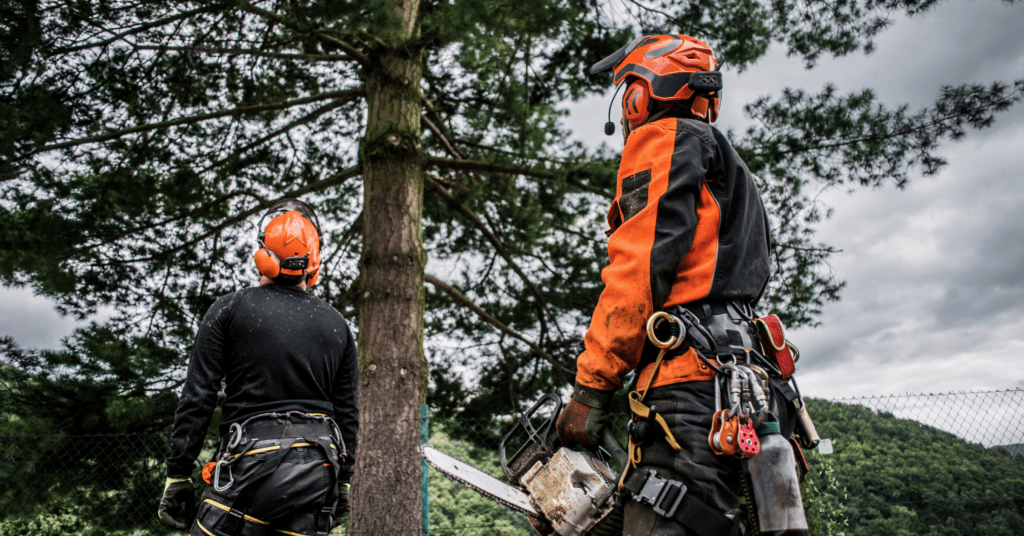
In Victoria, BC, the safety and beauty of your property and community hinge on proactive and professional tree care. At Anchor Tree Service, we understand the critical importance of preserving the health and stability of your trees while ensuring the safety of your surroundings. Our team of certified arborists is equipped with the knowledge, skills, and tools to address any tree-related emergency or maintenance need. From emergency tree removals to regular health assessments and preventive care, we’re here to support the vitality of your trees and the safety of your environment. Don’t wait for a tree emergency to disrupt your life. Contact us today to schedule an inspection or to learn more about our comprehensive tree care services in Victoria, BC. Let us help you maintain a safe, beautiful, and thriving outdoor space.
